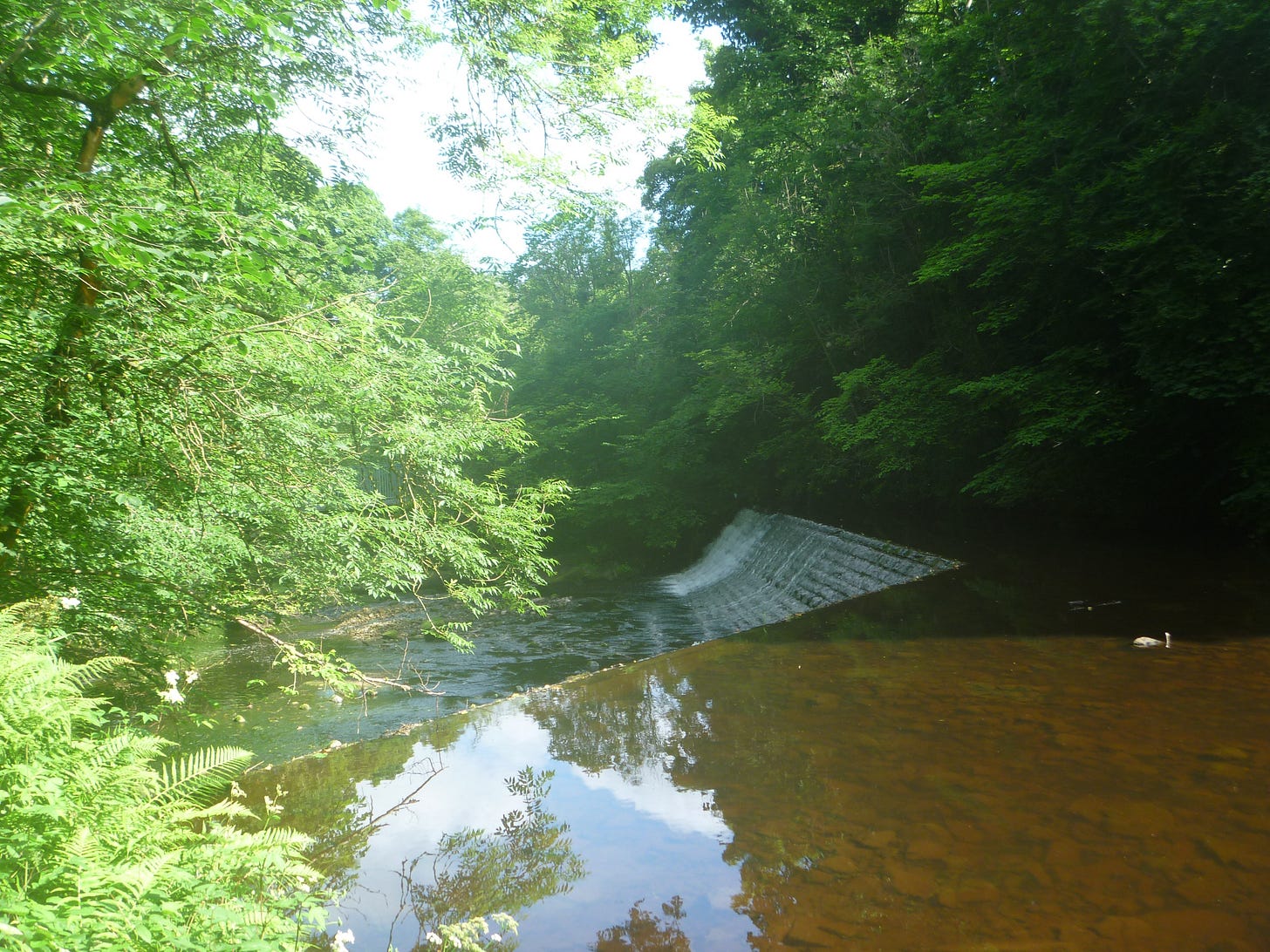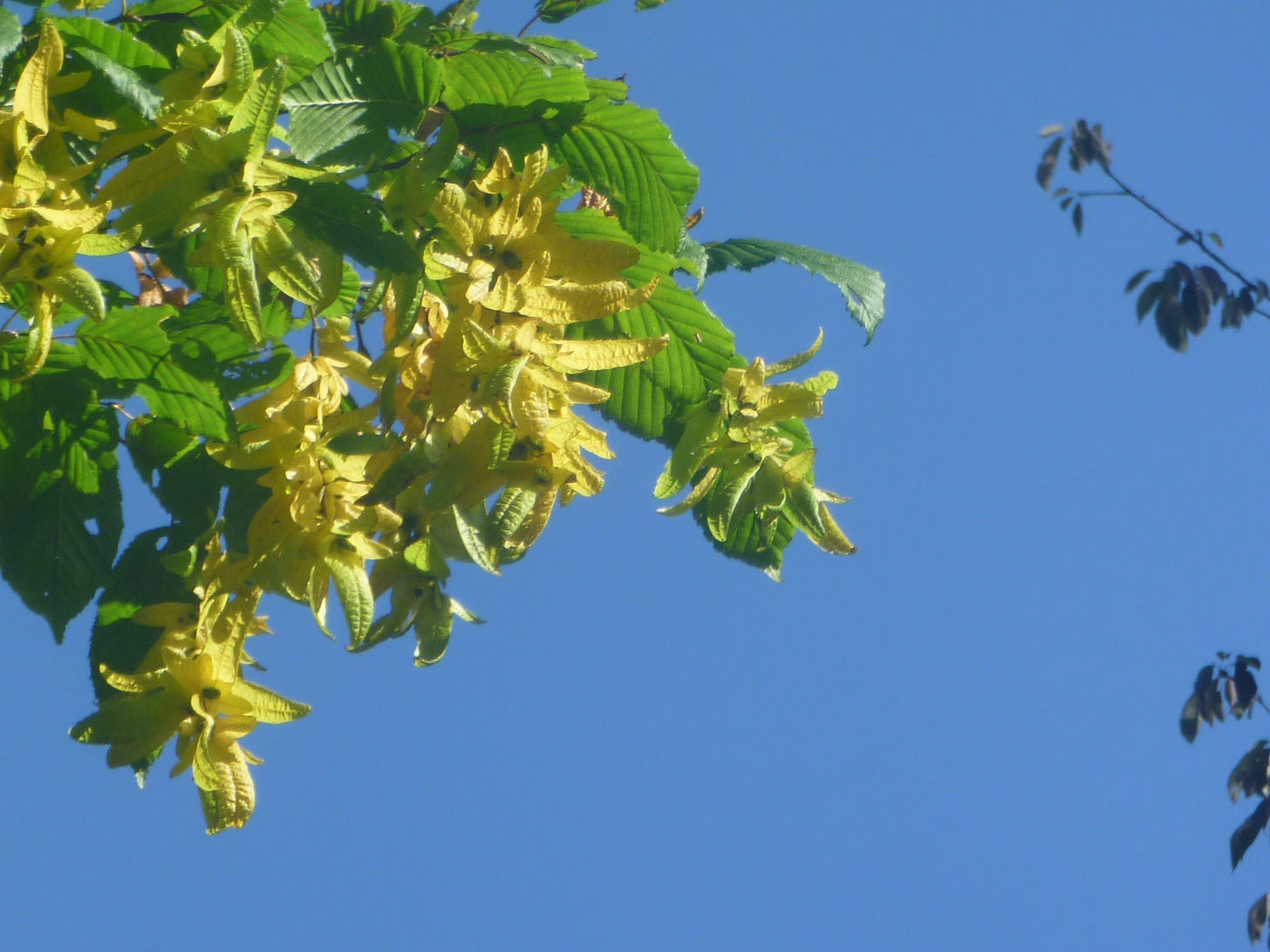It's World Rivers Day on the fourth Sunday of September. So, I thought that this week, I would write something about my connection with one of Edinburgh's rivers.
Edinburgh actually has three rivers, the River Almond, the Water of Leith and the smaller river (or burn) that is known as Braid Burn or Figgate Burn, depending on where you are along the burn.
I've been volunteering for the Water of Leith Conservation Trust for many years now. One morning most weeks, I'm out in the Dells (the most picturesque part of the river) picking litter and recording wildlife, plus chatting to people (and their dogs). On my volunteer patrol last week, I was delighted to see three Common Buzzards and a Sparrowhawk gliding high in the sky and a Grey Heron and Grey Wagtail near the weir in the photo below.
I'm sure I'll write more about the river in the future, but for now here's a short introduction.
The Water of Leith rises in the Pentland Hills to the south of Edinburgh and runs through Balerno and Edinburgh to Leith to meet the River Forth. The river’s name comes from the Celtic people who lived here in the Iron Age: Leith meant The Water.
The course of the Water of Leith began to form 25 000 years ago during the Ice Ages when Scotland was covered by ice. Some parts later filled with glacial deposits whereas other parts were gouged very deep. There is a glacial erratic on the walkway in the Dells, as shown in the photo below, taken a few years ago. This rock has been there since the ice ages!
The river is a wonderful place for nature, around 80 species of birds have been seen along the length of the river, including Kingfishers and Green Woodpeckers, about ten species of mammal, including Roe Deer and Otters, nine species of fish, including Grayling and Three-spined Stickleback and over 200 species of insects, including Speckled Wood Butterflies and Leucozonia glaucia hoverflies. Over 100 species of flowering plants are found along the river (including garden escapees and introduced species), at least 22 species of trees and shrubs (again including introductions) plus ferns, rushes, mosses, liverworts and lichens.
Colinton Dell covers 27.45 hectares and is made up 10% of river and 80% of woodland, with the other 10% being open areas of grassland. The woodland is partly ancient broadleaved woodland (In Scotland, ancient woodland is defined as land that is currently wooded and has been continually wooded, at least since 1750, the definition differs elsewhere. The fact that the area has been continually wooded for that time doesn't mean that any individual trees are that old). Some areas of the Dells have been planted with non native species, including several beautiful Hornbeams that were originally planted because of their hard wood which was very useful in the construction of the many mills that used to line the banks of the river. Hornbeam is non-native to Scotland, but is native to the south-east of England. It's a lovely tree in Autumn when you see the fruits that look like mini-chandeliers and are known as samaras.
Walking through the Dells, it's difficult to imagine that this peaceful, wooded area was once bustling with people working in the mills! Mills whose products included, at various times: linoleum; the first Scottish banknotes and (my favourite) dry shampoo for Highland cattle!
Some of the mills have disappeared entirely, with at least one having burned down. Others have left traces, ranging from the mill house, usually now turned into a private residence, or the mill stream. It can be fascinating to walk around the Dells, looking for traces the area's past industrial heritage. Colinton Historical Society has put together an interesting walking route highlighting the mills of the area. A few years ago the Water of Leith Conservation Trust created wildflower meadows in areas along the river, including on the old site of Bog's Mill, with wetland species being sown in what used to be the mill stream, which is a nice way of blending the industrial heritage with modern attempts to help nature.
There is much more I could write about this wonderful river - I’ll almost certainly come back to it in future posts!
Thanks for reading Crafty Green Poet. Subscriptions are currently free for everyone, but if you’d like to show your appreciation, you can buy me a coffee and help me support independent cafés near the Water of Leith. Click on the button below!
Find out more about Volunteering with the Water of Leith Trust.
Many rivers across the British Isles are looked after by river trusts. Find out more about the work of these trusts, and find your local trust on the Rivers Trust website.
Many rivers in the UK recently have been treated appallingly badly. River Action campaigns to rescue Britain’s rivers from a cocktail of agricultural, sewage and industrial pollution. They are holding a March for Clean Water in London on 26 October , calling for our rivers to be cleaned up.
In the News
The UK’s first new deep coalmine in 30 years will not be allowed to go ahead after a ruling in the high court according to the Guardian.
What I’m Reading
Turning the Boat for Home by Richard Mabey - essays about the author’s life as a nature writer.







Fascinating as always. I didn’t know about WRD either.
Thanks for highlighting World Rivers Day. 👍🏻